Xingu corydoras - Corydoras xinguensis
Scientific name: Corydoras xinguensis
Common name: Xingu corydoras
Family: Callichthyidae
Usual size in fish tanks: 3 - 4 cm (1.18 - 1.57 inch)
014
Recommended pH range: 5.6 - 7.6
Recommended water hardness: 4 - 18°N (71.43 - 321.43ppm)
0°C 32°F30°C 86°F
Recommended temperature range: 22 - 26 °C (71.6 - 78.8°F)
The way how these fish reproduce: Spawning
Where the species comes from: South America
Temperament to its own species: peaceful
Temperament toward other fish species: peaceful
Usual place in the tank: Bottom levels
Origin
The xingu corydoras originate from South America where they inhabit the upper waterways of the River Xingu in Brazil.
Short description
Like all corydoras species these are extremely popular in the aquarium hobby, they are very peaceful in the aquarium and can perform strange antics in the water much to the delight of their keepers. The xingu corydoras are not quite as common in the aquatic stores as other corydoras species but well worth looking out for. As they mature they develop a pinkish tinge to their main body colouration which is broken by brown speckles. Adult specimens should reach an average length of up to 1.5 inches making them ideal for the smaller aquariums.
Lifespan
If cared for correctly the average lifespan of the xingu corydoras should be approximately 5 years.General care
The xingu corydoras are not a difficult species to care for as long as they have high water quality in the aquarium. The minimum sized aquarium should be at least 2 feet (60cm) in length and 1 foot (30cm) wide. Use a lid on the aquarium as corydoras like to come to the surface to gulp air and the use of a lid will help to keep the air humid.Sand should be used for the substrate as they have delicate barbels which can easily be damaged and become infected. The addition of live plants will help to settles these fish and always keep them in a small group of at least 6 specimens as they are a very social species. The water temperature should range between 22-26°C (72-79°F) and make sure that the pH ranges between 5.6-7.6.
They will occupy the bottom levels of the aquarium so make sure that there are swimming spaces available as they are very active. Regular water changes should be performed on a weekly basis and any uneaten food syphoned out.
Feeding
Corydoras species are not difficult to feed but as they are bottom feeders it is best to add their food to the aquarium in the evenings when the other tank mates at higher levels are starting to slow down. Sinking pellets are ideal and treats of algae wafers should be offered 2-3 times per week. They will also require treats of live or frozen foods, brine shrimp and bloodworms are ideal.
Sexing
Mature females will grow slightly larger than mature males. When viewed from above the females will have a fuller body shape.
Breeding
To obtain a breeding pair it is best to add a small group of adults and allow them to pair naturally in the breeding tank. The water parameters in the tank should be the same as in the main aquarium and use an air driven sponge filter to keep the quality high. Plants can be added or spawning mops and keep the lighting subdued. Adding cooler water during the changes can also help to trigger the spawning process. Spawning usually takes place in the early hours of the morning and eggs will be scattered all over even on the tank glass.
Once spawning is completed it is best to remove the parent fish as the eggs will be seen as a food source. The eggs should hatch over a period of 4-5 days dependant on the water temperature and the fry will consume their yolk sacs until they become free swimming so do not add any food at this stage. Once free swimming the fry can be fed on newly hatched brine shrimp or infusoria. Feed smaller meals several times per day rather than a couple of larger meals. Any uneaten food should be syphoned from the tank.

 Aspidoras
Aspidoras  Giant
Giant  Hognosed
Hognosed  Emerald
Emerald  Cascarudo
Cascarudo  Acre
Acre  Adolfo’s
Adolfo’s  Bronze
Bronze 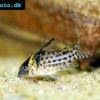 Agassizii’s
Agassizii’s  Spotted
Spotted  Skunk
Skunk  Corydoras
Corydoras 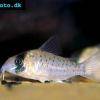 Fairy
Fairy  Corydoras
Corydoras  Pink
Pink 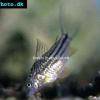 San
San  Bond’s
Bond’s  Spotted
Spotted  Tailspot
Tailspot  Concolor
Concolor  Cope’s
Cope’s 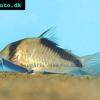 Sand’s
Sand’s  False
False  False
False 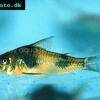 Ehrhardt’s
Ehrhardt’s  Elegant
Elegant 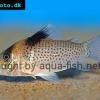 Saddle
Saddle  Fowler’s
Fowler’s  Gomezi
Gomezi 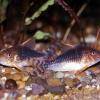 Palespotted
Palespotted 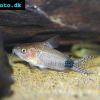 Guapore
Guapore  Dainty
Dainty  Mosaic
Mosaic  Imitator
Imitator  Julii
Julii  Leopard
Leopard 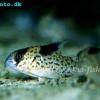 Black
Black  Slant-bar
Slant-bar  Bluespotted
Bluespotted  False
False  Bandit
Bandit  Mini
Mini 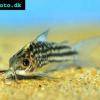 Napo
Napo  Corydoras
Corydoras 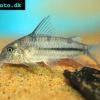 Blue
Blue  Nijssen’s
Nijssen’s 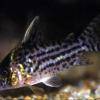 Ornate
Ornate  Peppered
Peppered  Panda
Panda  Albertini
Albertini  Pastaza
Pastaza  Corydoras
Corydoras  Many-spotted
Many-spotted  Pretty
Pretty  Dwarf
Dwarf  Iridescent
Iridescent  Reticulated
Reticulated 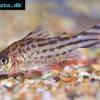 Bannertail
Bannertail  Robust
Robust  Schwartz’s
Schwartz’s  Black
Black 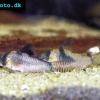 Longnosed
Longnosed  Seuss’
Seuss’  Smudge
Smudge  Masquerade
Masquerade 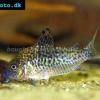 False
False  Millenium
Millenium  Pinkthroat
Pinkthroat  Sterba’s
Sterba’s  Longsnout
Longsnout  False
False  Miguelito
Miguelito 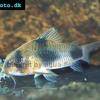 Twosaddle
Twosaddle 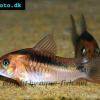 Black
Black  Porthole
Porthole  Flagtail
Flagtail  Brown
Brown  Spotted
Spotted